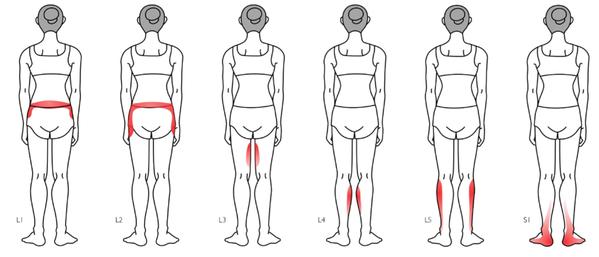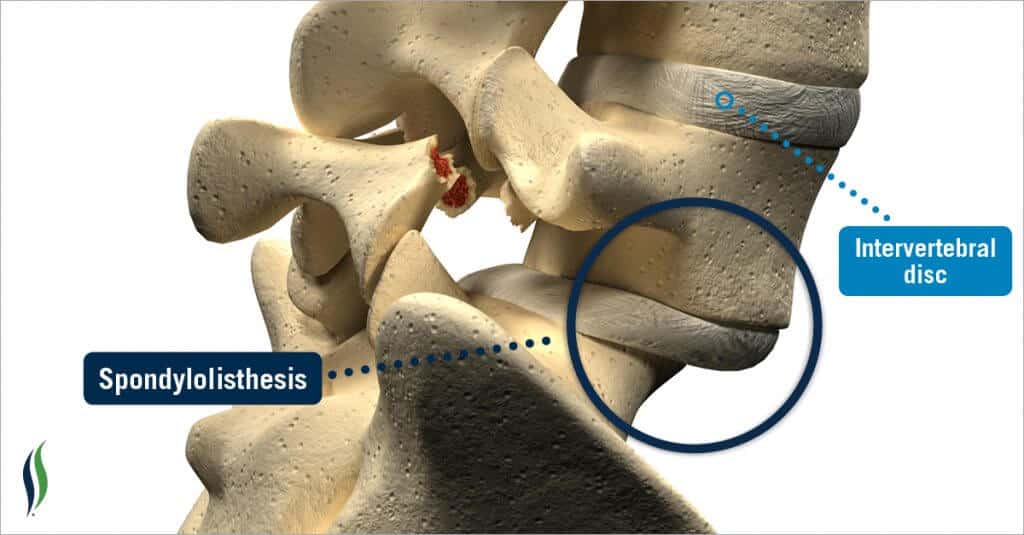Spondylolisthesis is the condition where a bone in the spinal vertebra slides forward or backward to another spinal vertebra causing issues such as blockage of the nerve or the spinal cord.
Spondylolisthesis
What is Spondylolisthesis?

Symptoms
Spondylolisthesis does not always give off symptoms. As a result, the condition is not always noticed. However, due to the sliding of the bone possibly affecting the nerves, patients may experience:
- Pain in the back or buttocks
- Pain running from the lower back down to legs
- Loss of sensation or numbness in one or both of the legs
- Difficulty in activities such as walking or running
- Risk of loss of control over bowel movements

Causes
Spondylolisthesis can be caused by:
- Degenerative spondylolisthesis occurs in older people and is a direct consequence of other bone-related conditions such as arthritis and weakness of the ligaments between spinal bones.
- A stress fracture of the spinal bone can cause spondylolisthesis. This is common when bending backwards repeatedly (e.g. gymnastics) or after an accident.
- Poor posture
- Prolonged sitting/standing
- Poor training/lifting technique
- Leg length discrepancy
- Work/Sports injury
- Congenital (You are born with it)
- Overweight
- Degenerative changes
- Previous surgery
Diagnosis
Similar to other bone-based conditions that have few to no symptoms, a CT scan or an MRI is the most common method to identify spondylolisthesis. Doctors may use these in conjunction with x-ray results to consider plans of treatment.
Treatment
Spondylolisthesis treatment begins with ensuring that all physical activity, affecting the spine, be stopped immediately. This is done to ensure that further damage to the spine is limited. Since the condition causes inflammation, doctors often advise the use of anti-inflammatory medication to reduce pain. Doctors may also recommend dieting and losing weight as obesity can add strain to the spinal bones, leading to spondylolisthesis.
An important aspect of treatment is physiotherapy. Physiotherapy helps ensure that the condition does not worsen. A physiotherapist will teach exercises to reduce the symptoms of spondylolisthesis. This includes stomach muscle strengthening to improve the core of the body.
Surgery may be recommended in severe cases to adjust the bones in the spine or relief the pressure from the nerve. Rehabilitation will then be necessary to regain muscle strength and spine movement.
Prevention
1) Home Exercises
- Back and leg stretches
- Nerve stretching
- Core strengthening
- Sport/Work specific rehab exercises
- Keep moving within pain limits
- Avoid prolonged sitting/standing
- Avoid heavy lifting/twisting movements
- Use proper lifting techniques (use your legs, not your back)
- Adjust your desk, car seat or work station ergonomics
- Use a support behind your lower back when you sit
- Avoid aggravating movements and activities
Tips And Tricks
- Consider resting after a sports game.
- Gradually increase activity rather than spike it up immediately.
- A healthy diet and regular intake of calcium can strengthen bones and prevent obesity (Which further increases the risk of spondylolisthesis).

New Client Offer - 10% OFF
Are you in pain? Not sure if we can help you?
Book your initial appointment and receive 10% off any service!